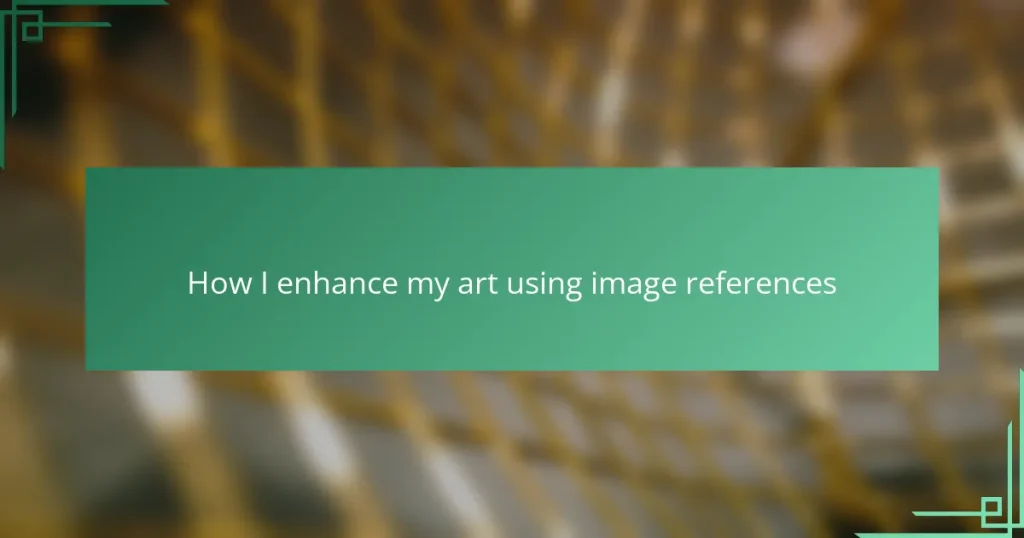Key takeaways
- Using image references in tattoo art enhances understanding of form, detail, and emotional connection, making designs more authentic.
- Select high-quality, emotionally resonant references while diversifying sources, combining photos with sketches and textures to inspire creativity.
- Organize reference images effectively with digital tools, categorizing by themes to streamline workflow and facilitate the creative process.
- Personalize designs by integrating meaningful elements from references, ensuring the tattoos resonate with the wearer’s story and identity.
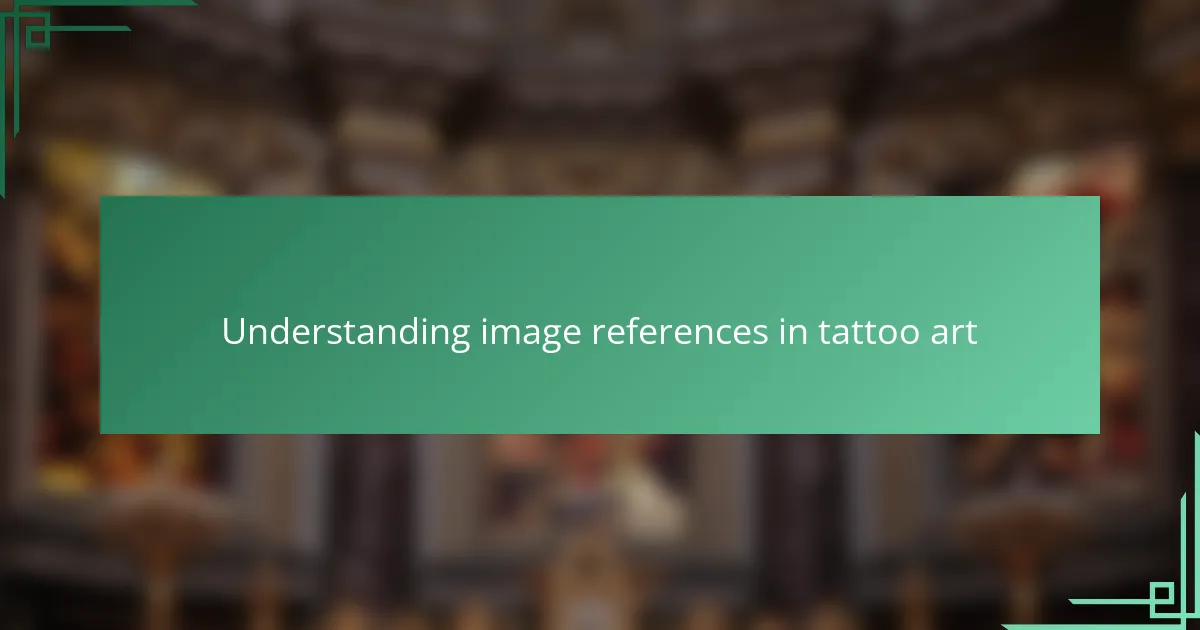
Understanding image references in tattoo art
When I first started using image references in my tattoo work, I was amazed by how much they deepened my understanding of form and detail. Why rely solely on imagination when you can study real textures, lighting, and anatomy to bring tattoos to life more convincingly? These references act like a visual compass, guiding me through the creative process without stifling my own style.
Using image references isn’t about copying—it’s about learning. I often find myself discovering unexpected nuances, like how light hits a leaf or the subtle curve of a muscle, which I then adapt into my designs. Have you ever felt stuck trying to picture something perfectly in your mind? That’s exactly when a reference becomes invaluable, making the invisible visible.
There’s also an emotional connection that comes with referencing real images. When I work from a photo of a natural element or a vintage artwork, I’m tapping into its history and soul. It reminds me that every tattoo tells a story, and these references help anchor my art in something authentic and meaningful.
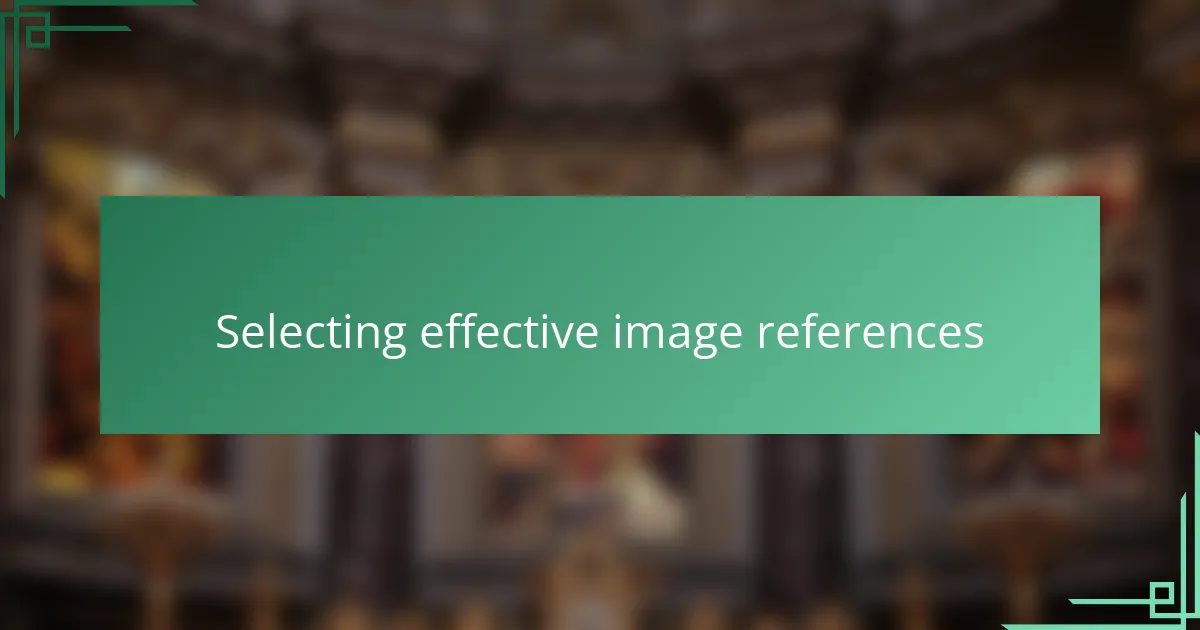
Selecting effective image references
Choosing the right image references is like picking the perfect tool for a delicate task. I always look for images that are clear and detailed because blurry or overly edited photos can mislead my understanding of the subject. Have you ever tried tattooing skin tones from a poorly lit photo? It’s frustrating, and that’s why I make sure my references have natural lighting and sharp focus.
Sometimes, it’s not just about the technical quality but the vibe the image gives off. When I find a reference that resonates emotionally, maybe a weathered old tree or an expressive animal face, it sparks creativity in ways sterile images never could. I ask myself, “Does this picture inspire the feeling I want to convey in the tattoo?” If the answer’s yes, then it’s a keeper.
I’ve learned to diversify my reference sources too, mixing photographs with sketches, paintings, and even textures. This approach gives me a richer visual library to pull from and prevents my work from looking repetitive. What’s your go-to source? I find that stepping outside traditional photo libraries often leads to unexpected and exciting design directions.
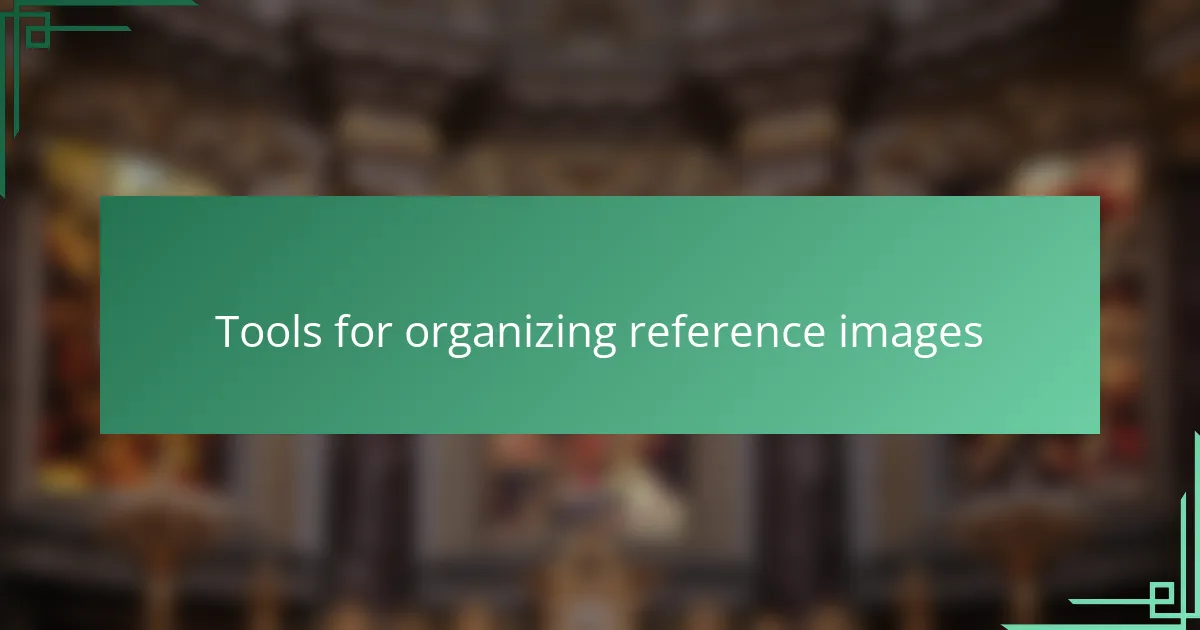
Tools for organizing reference images
Keeping my reference images organized is a game-changer for my workflow. Early on, I struggled with scattered folders and lost files, which made finding the right image frustrating and time-consuming. That’s when I started using digital tools like Pinterest boards and dedicated folders in apps like Google Drive—it feels like having my own curated art museum ready at a moment’s notice.
I often ask myself, how do I balance easy access with detailed categorization? For me, tagging images by themes—like “floral,” “anatomy,” or “textures”—helps immensely. This way, when inspiration strikes or I hit a creative block, I can quickly sift through my collection and pull exactly what I need without drowning in clutter.
There’s also something satisfying about visually browsing through thumbnails rather than scrolling endlessly through random photos. Tools that allow me to create mood boards or collages really bring my vision to life even before the needle touches skin. Have you noticed how arranging images side-by-side can spark new ideas? I find this process almost meditative and crucial for crafting unique, inspired tattoo designs.
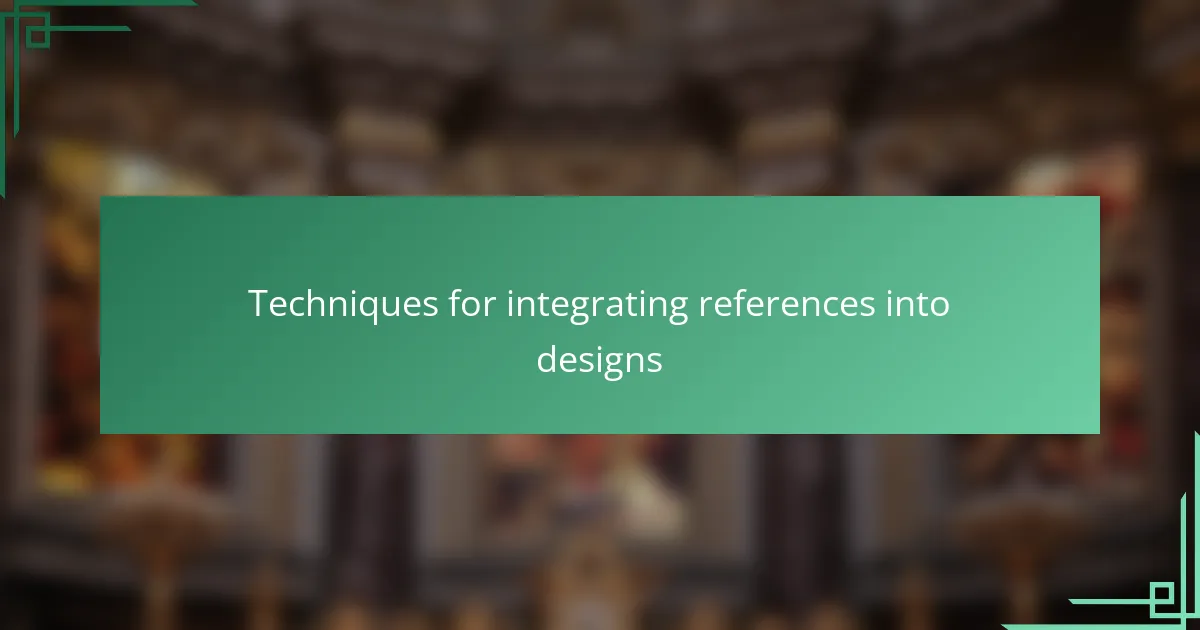
Techniques for integrating references into designs
One technique I rely on is blending multiple references into a single design. Instead of copying one image, I take elements I love from different sources—like the texture of tree bark from one photo and the flow of a vintage tattoo from another—and weave them together. Have you ever noticed how this mix not only fuels creativity but also results in a tattoo that feels truly unique and personal?
I also like to experiment with stylizing the reference rather than replicating it exactly. For example, I might exaggerate shadows or simplify details to match the tattoo’s overall aesthetic. This approach lets me honor the original image’s essence while still putting my own artistic stamp on the work. Isn’t it exciting how such small adjustments can completely change the mood and impact of a design?
Another practice I find helpful is tracing key shapes or outlines from references, then freehanding the rest. This first step grounds the design in accuracy, but the freedom that follows keeps the flow dynamic and expressive. Do you find that this balance between structure and spontaneity helps your creativity flourish? For me, it’s the sweet spot where precision meets personality in tattoo art.
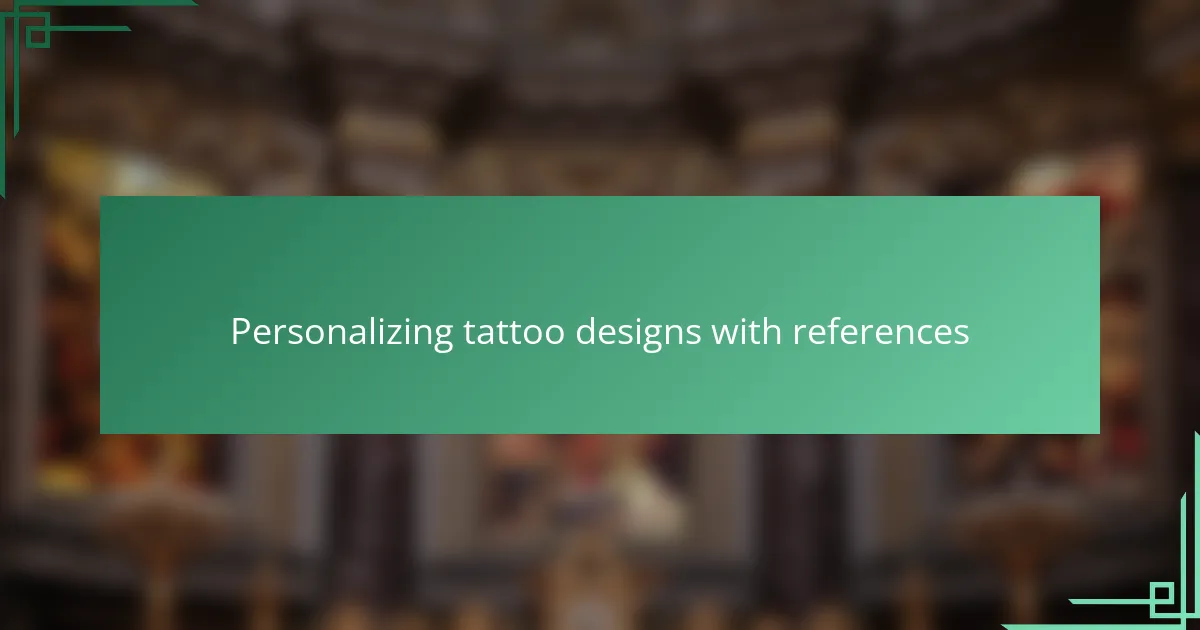
Personalizing tattoo designs with references
When I personalize tattoo designs using references, I often think about how to make the design resonate with the wearer’s story. It’s not just about replicating an image but about translating it into something that feels intimate and unique. Have you ever noticed how a small twist on a familiar element can completely change its meaning? That’s the magic I aim for when working with references.
Sometimes, I take a reference that holds personal significance—like a flower from a client’s hometown or a symbol from their heritage—and weave it subtly into the design. These details might go unnoticed by others, but they create a deep emotional connection for the person wearing the tattoo. It’s as if the reference becomes a bridge between the art and the wearer’s identity.
I also love how references inspire me to explore styles I wouldn’t have tried otherwise. For example, blending the delicate lines from botanical illustrations with bold tribal patterns can create something fresh and personalized. Would you believe that these combinations often happen spontaneously, sparked by a single image? This creative spontaneity keeps my work feeling alive and deeply personal.

Avoiding common mistakes with references
One common mistake I’ve seen myself and others make is relying too heavily on a single image reference without considering its accuracy or context. Have you ever realized too late that the reference had distorted proportions or unnatural lighting? That’s why I always cross-check multiple sources to avoid embedding those errors into my tattoo designs.
Another pitfall is mistaking references for templates rather than tools for inspiration. Early on, I caught myself trying to copy an image exactly, which left my work feeling stiff and uninspired. How do you keep the balance between learning from a reference and preserving your artistic voice? For me, treating references as guides rather than blueprints makes all the difference.
I’ve also learned to beware of low-quality images that blur important details. Once, I used a blurry photo for an intricate floral tattoo, and it ended up costing me extra time reworking areas that didn’t translate well. Isn’t it worth taking a moment to find crisp, clear references that truly show texture and form? That small effort upfront saves frustration down the line and elevates the whole piece.
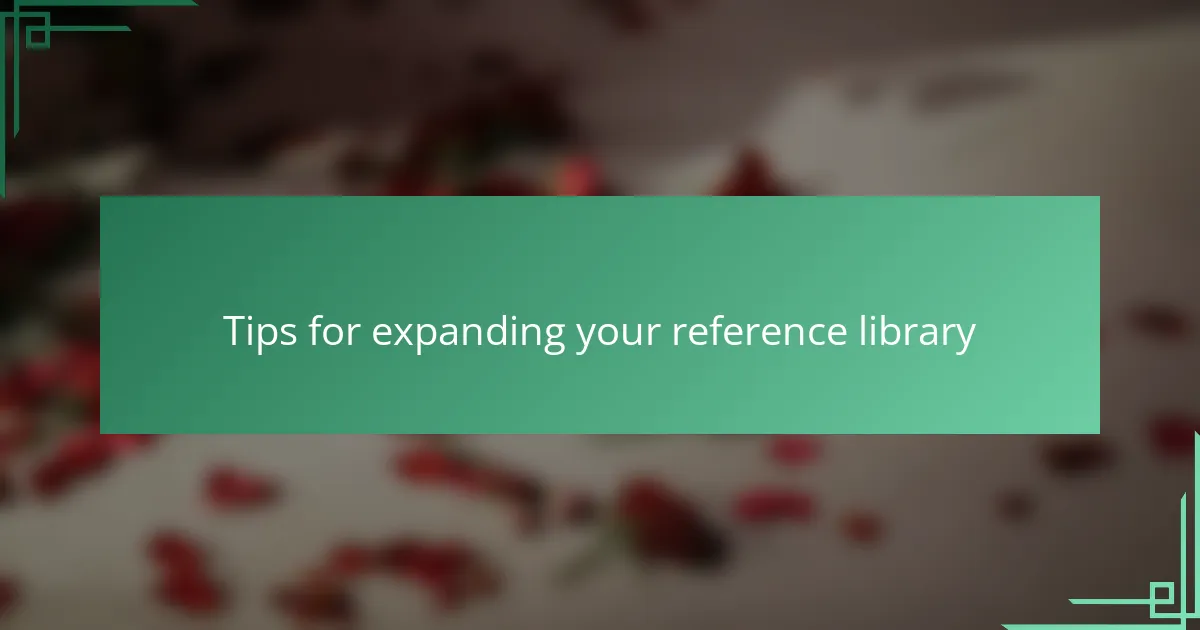
Tips for expanding your reference library
Building a diverse reference library has been a game-changer for my tattoo art. I make it a habit to gather images from varied sources—everything from vintage magazines and nature walks to online archives and art books. Have you ever noticed how stumbling upon an old, unexpected photo can spark a fresh design idea? That’s exactly why I’m always on the lookout for unique visuals beyond the usual digital libraries.
To keep things fresh, I challenge myself to explore different themes regularly. For instance, one month I might focus on textures like rusted metal or tree bark, and another month, I dive into animal anatomy or historical costume details. It feels like feeding my creativity a balanced diet—preventing the monotony that can come from relying too heavily on the same type of images.
I also find it incredibly helpful to connect with fellow artists and clients when expanding my references. Sometimes, a client’s personal story leads me to research cultural symbols or specific flora and fauna unique to their background. Have you tried asking about meaningful imagery during consultations? In my experience, this collaborative approach enriches my reference pool and helps create tattoos that resonate on a deeper level.
